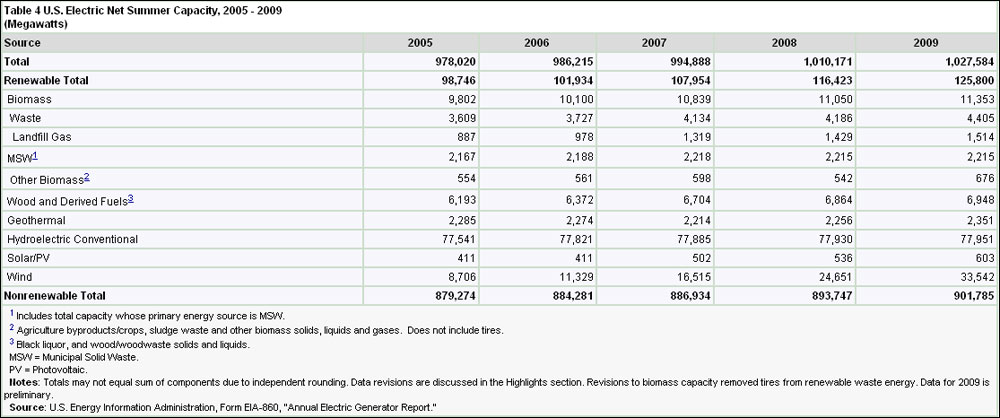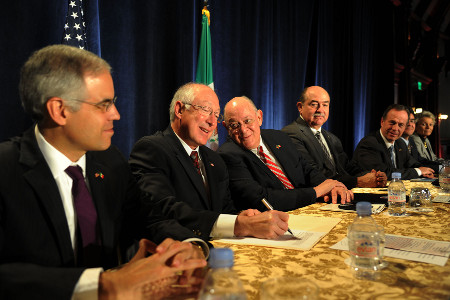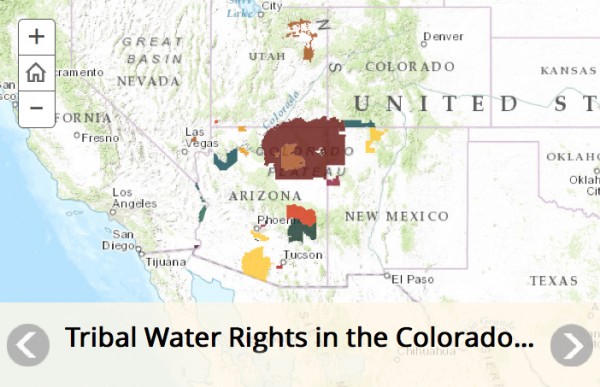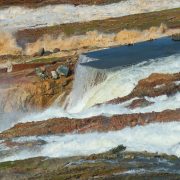California Approves World’s Largest Solar Power Project
The solar project will use groundwater, but its effect on the Colorado River needs to be determined.
While officials approved the 1,000-megawatt solar power project in California last week, its effect on the Colorado River needs to be determined before construction commences, according to the state’s energy commission.

Planned for a site eight miles west of the town of Blythe in the Mojave Desert, the power complex will comprise four individual 250 MW units, generating electricity using parabolic mirrors. Solar Millennium, the project’s owner, has signed a contract with Southern California Edison for the entire output of the complex, which will begin operating in 2013.
The Blythe facility will be the world’s largest solar power operation, as well as double the installed commercial solar capacity in the United States, which was 603 MW in 2009, according to the Energy Information Administration.
Gov. Arnold Schwarzenegger has fast-tracked solar energy projects as California strives to meet its goal of obtaining 33 percent of its energy from renewable sources by 2020. The California Energy Commission approved two solar projects earlier this summer and will rule on three more by the end of the month, according to a press release from the governor’s office.
The plants in the Blythe project will be dry-cooled, a technology that uses ambient air to dissipate heat. While it will increase the cost of the plant and reduce its efficiency, dry cooling decreases water consumption by more than 90 percent.
Solar Millennium has decided to use dry cooling in all of its plants, company representative Bill Keegan told Circle of Blue.
“Obviously there’s a trade off because of a loss of efficiency and power capacity, but we feel it’s worth it with the water savings,” Keegan said.
The Blythe plants will have an auxiliary wet cooling system for the summer months to keep critical equipment functioning at its designed capacity.
The company will drill wells on-site for its water needs: 4,100 acre-feet during construction and 600 AF annually to operate the plant. The CEC’s environmental review found that the extraction rate will exceed recharge, but the plant will not significantly affect the groundwater basin because of the large amount—five million AF—of water already stored.
However, the groundwater recharge is believed to be connected with surface flows from the nearby Colorado River, which cannot add new users to its appropriation. As part of its decision, the CEC is requiring Solar Millennium to study the relationship between the groundwater and the river, as well as submit a plan to offset any effects its water use would have on the river. This plan will need approval before the company withdraws any water.
The CEC’s suggested options include conservation programs; funding irrigation improvements elsewhere; purchasing water rights or participating in the Bureau of Land Management’s program to remove tamarisks, a water-intensive invasive plant.
Keegan said Solar Millennium is still looking into how best to offset its water use.
The company wants to begin construction by Dec. 31 to take advantage of federal loan guarantees for renewable energy projects that expire at the end of the year.
The next step in the approval process will be in October when the BLM will decide whether to grant right-of-way and use permits for the plants and transmission lines.
Read more about California’s solar power development on Circle of Blue.
Brett writes about agriculture, energy, infrastructure, and the politics and economics of water in the United States. He also writes the Federal Water Tap, Circle of Blue’s weekly digest of U.S. government water news. He is the winner of two Society of Environmental Journalists reporting awards, one of the top honors in American environmental journalism: first place for explanatory reporting for a series on septic system pollution in the United States(2016) and third place for beat reporting in a small market (2014). He received the Sierra Club’s Distinguished Service Award in 2018. Brett lives in Seattle, where he hikes the mountains and bakes pies. Contact Brett Walton













Leave a Reply
Want to join the discussion?Feel free to contribute!